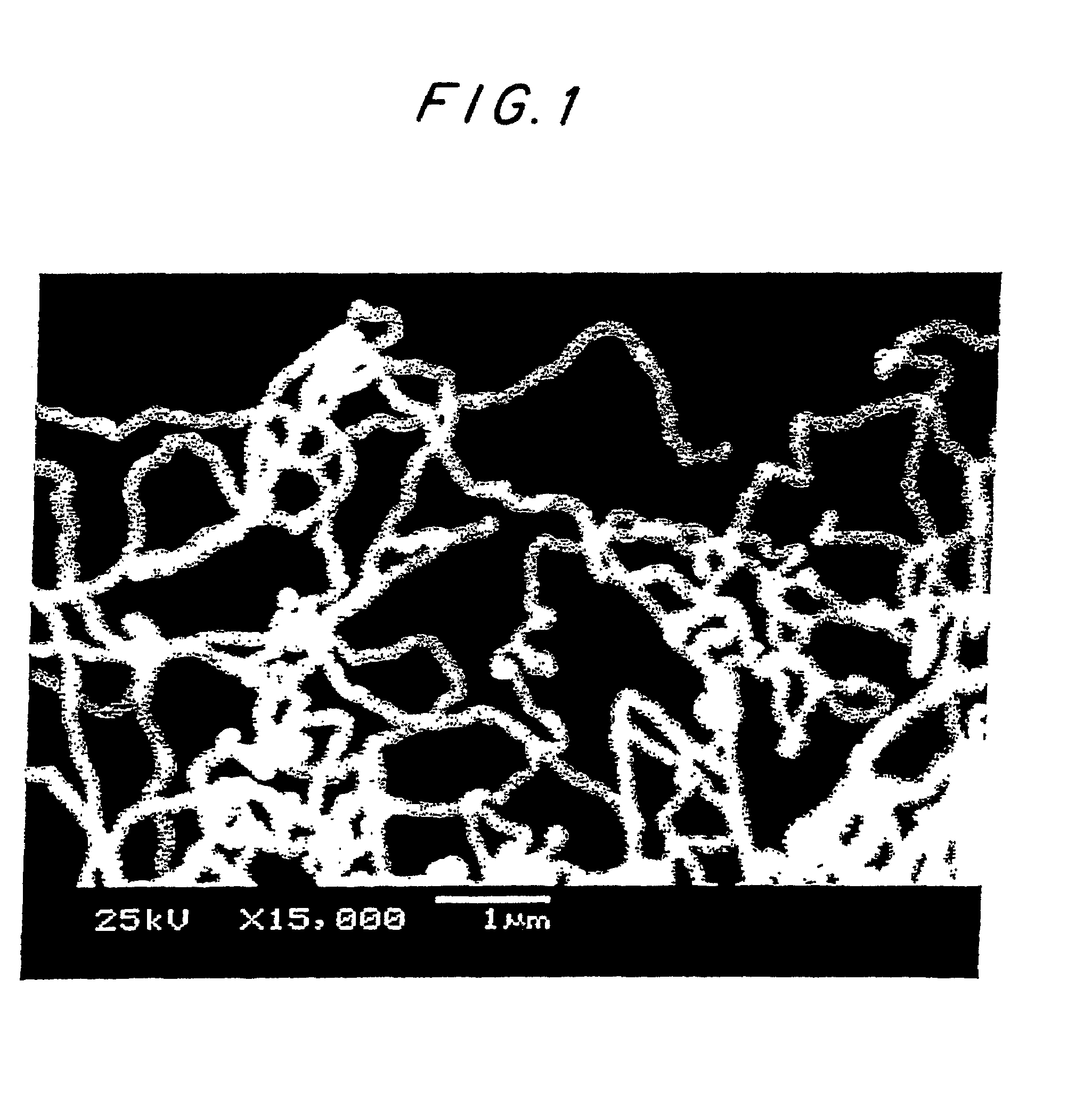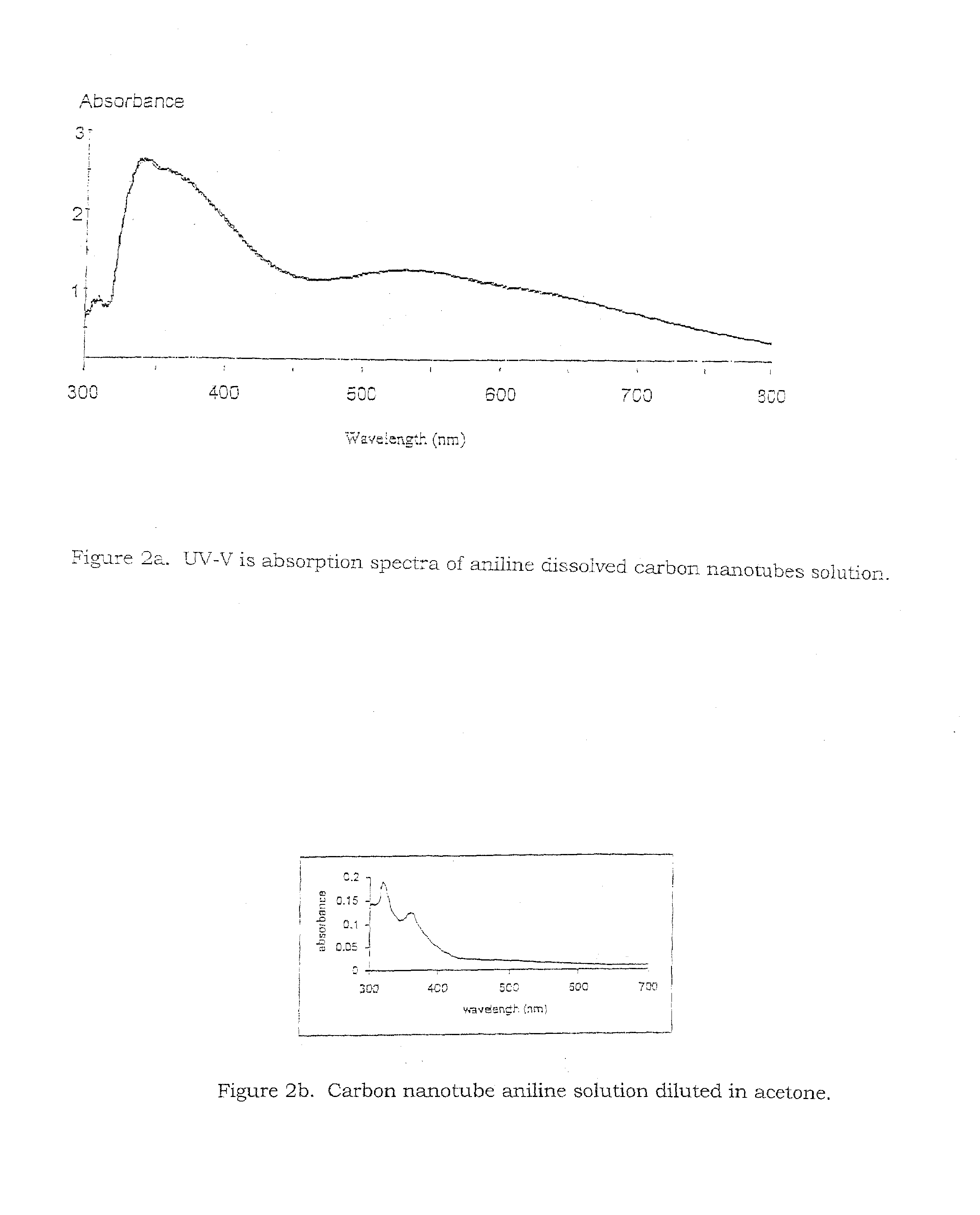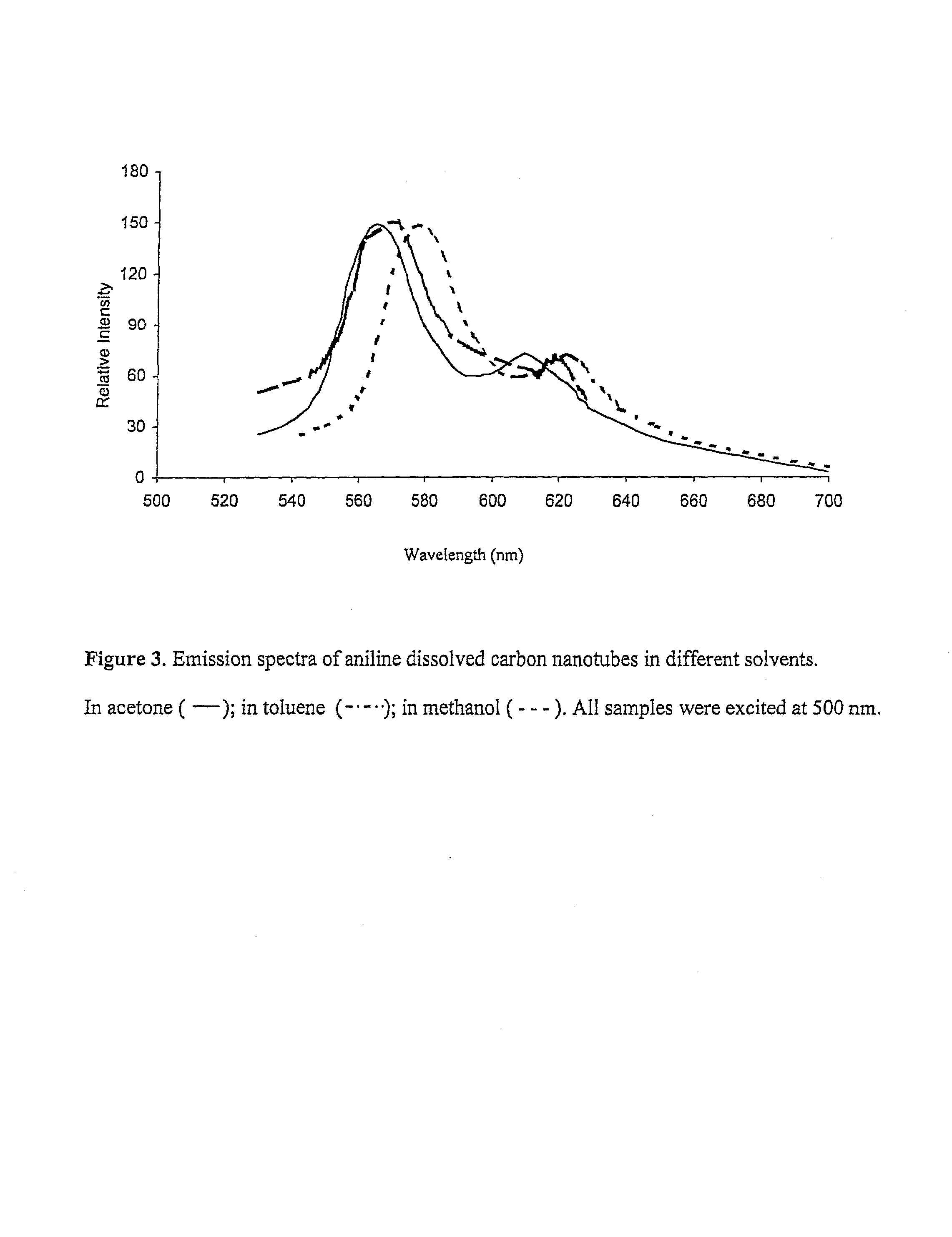Method for dissolving nanostructural materials
a nanostructured material and nanotechnology, applied in the direction of electric discharge tube/lamp manufacture, sustainable manufacturing/processing, final product manufacturing, etc., can solve the problems of increasing the solubility of carbon nanotubes, difficult to dissolve or disperse carbon nanotubes in most organic or inorganic solvents, and increasing the dispersibility to a limited extent, so as to improve the chemical interaction and improve the effect of composite materials
- Summary
- Abstract
- Description
- Claims
- Application Information
AI Technical Summary
Benefits of technology
Problems solved by technology
Method used
Image
Examples
example 1
[0037]Purified single-walled carbon nanotubes (SWNT) were purchased from Rice University in toluene suspension. SWNTs were filtered through a 0.2 13m PTFE filter membrane to produce so-called “bucky paper”.2 Multi-walled nanotubes were purchased from Nanocs Inc., New York. In one experiment, 40 mg of accurately weighed NTs were added to 5 mL aniline and the mixture was heated at reflux for 3 hours in the dark. Dissolution of carbon nanotubes in aniline was observed by the color change of the solution after reflux for a short time. Thus, with continuous heating, the original colorless aniline solution first became brownish and then turned dark red. After being cooled to room temperature, a NT solution was obtained by filtration through a 0.2 PTFE membrane. An SEM picture of carbon nanotubes dissolved in aniline (see FIG. 1) showed similar structural features to that before dissolution,9 suggesting no damage had occurred to the NTs (of course, SEM would not reveal evidence of chemical...
example 2
[0038]2.5 grams of multi-walled carbon nanotubes were placed into a 100 mL flask. Then 25, mL of aniline was added, and the mixture was heated at reflux for two hours. The resulting brownish solution was filtered by 2 micrometer PTEE filter paper, and a clear solution was collected.
example 3
[0039]Carbon nanotubes from tubes from Rice University were dispersed in toluene and 10 mL of this dispersion was placed into a 100 mL flask. 20 mL of aniline was added, and the mixture was heated at reflux for two hours. The resulting browning solution was filtered through 2 micrometer PTEE filter paper, and the nanotube solution was collected.
PUM
| Property | Measurement | Unit |
|---|---|---|
| solubility | aaaaa | aaaaa |
| solubility | aaaaa | aaaaa |
| solubility | aaaaa | aaaaa |
Abstract
Description
Claims
Application Information
 Login to View More
Login to View More - R&D
- Intellectual Property
- Life Sciences
- Materials
- Tech Scout
- Unparalleled Data Quality
- Higher Quality Content
- 60% Fewer Hallucinations
Browse by: Latest US Patents, China's latest patents, Technical Efficacy Thesaurus, Application Domain, Technology Topic, Popular Technical Reports.
© 2025 PatSnap. All rights reserved.Legal|Privacy policy|Modern Slavery Act Transparency Statement|Sitemap|About US| Contact US: help@patsnap.com



